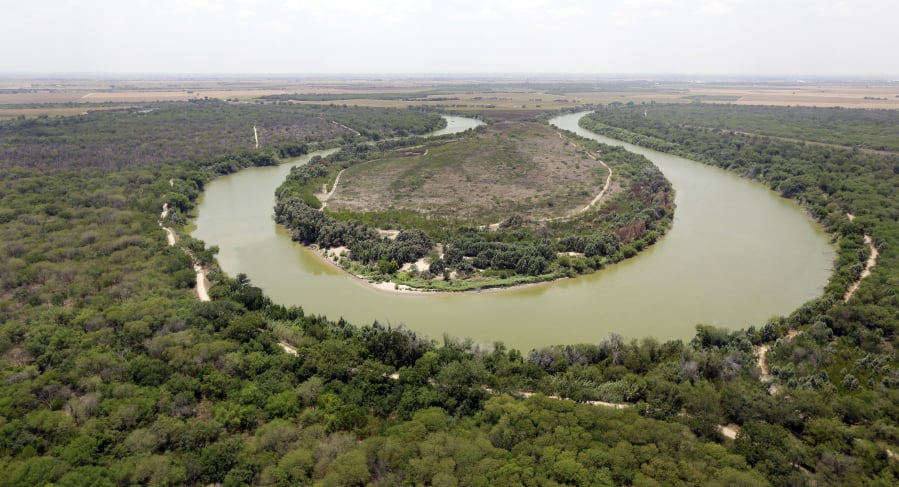ROMA, Texas — Stymied by Congress and the courts, President Donald Trump has struggled to make good on his signature campaign promises to build a wall and stop migrants. But there is at least one place where his vision is becoming reality: the sinuous lower Rio Grande Valley, scene of more unauthorized crossings than any other stretch between the Pacific Ocean and the Gulf of Mexico.
This month, as Texas National Guard troops were taking up positions on the state’s southern edge at Trump’s request, the head of U.S. Customs and Border Protection told lawmakers that the agency hopes to award contracts by September for border wall construction near where the Rio Grande meets the Gulf. And the U.S. government’s efforts to identify and begin the seizure of private land along the river “are well underway,” CBP Commissioner Kevin McAleenan told a congressional subcommittee Thursday.
Last month, Congress rejected Trump’s request for up to $25 billion to build the full length of his coveted wall, but he did win funding for 33 miles of barriers in the Rio Grande Valley.
And while the Guard will eventually withdraw, a wall could change the region forever. This stretch of border is the only place where the National Guard is deployed and where Congress funded the construction of new walls, instead of replacing or fortifying existing barriers.
The current plans call for up to 25 miles of construction in Hidalgo County, which includes the city of McAllen and already has segments of stop-and-start border fencing, some of it installed well north of the river.
The remaining construction would go in Starr County, further west. CBP last year issued a map that marked off several cities in the county for construction, including Roma and Rio Grande City.
Roma was built on the bluffs overlooking the Rio Grande and Ciudad Miguel Aleman on the southern side of what Mexicans call el Rio Bravo del Norte — the furious river of the north. From the bluffs, visitors can hear roosters clucking in Miguel Aleman and see schoolchildren and traffic crossing a tiny bridge.
A group of Guard members this month set up below the bluffs, with rifle-carrying soldiers holding binoculars and peering south over the river.
Trump says the Guard is necessary to guard the border until the wall can be built across the U.S.-Mexico border. His administration and Texas Gov. Greg Abbott, a fellow Republican, have cited a recent increase in the number of border crossings and what they say are more smugglers and gang members trying to enter the United States.
Many people who live on the American side of the river see the situation differently. They say their communities are safe from the cartel-linked violence that has ravaged northern Mexico. And many border crossers entering the U.S. turn themselves in and try to seek asylum. They include thousands of adults and children fleeing violence and instability in Central America.
In some places, CBP wants to clear forests and brush to install roads and lighting. Advocates say that could destroy critical habitats and speed up erosion. A wall could potentially restrict the movement of animals and plant seeds.
Depending on how it’s built, a wall could also make the region more susceptible to flooding. In a natural disaster, it might push more water into Mexico, a potential violation of a treaty between the two countries.
It would also seal off many border cities from the region’s defining cultural and economic feature.
“The river is basically everything,” said Jim Chapman, a local resident who is part of the group Friends of the Wildlife Corridor. “It sustains the human population and it sustains much of the wildlife.”



